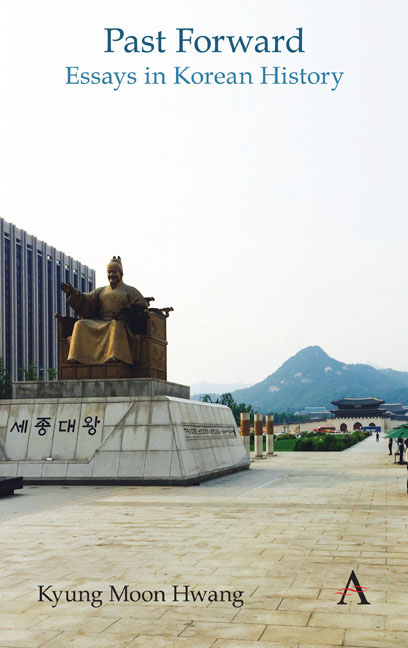Book contents
- Frontmatter
- Contents
- List of Figures
- Foreword
- Chronologies of Korean History
- Themes
- Acknowledgments
- Note on Romanization and Spelling
- Part I Circulating History
- Part II Durable Traditions
- Part III Ancient Remains
- Part IV Dynastic Depths
- Part V Modern Origins
- 24 Jungin, Forerunners to Professionals
- 25 1894, a Signal Year
- 26 Great Korean Empire
- 27 March First Independence Movement
- 28 The Politics of Disease
- 29 Korean Universities
- Part VI Challenges of Nationhood
- Part VII History Makers
- Part VIII External Presences
- Part IX Trials of Modernization
- Part X Gripped by the Past
- Index
26 - Great Korean Empire
from Part V - Modern Origins
- Frontmatter
- Contents
- List of Figures
- Foreword
- Chronologies of Korean History
- Themes
- Acknowledgments
- Note on Romanization and Spelling
- Part I Circulating History
- Part II Durable Traditions
- Part III Ancient Remains
- Part IV Dynastic Depths
- Part V Modern Origins
- 24 Jungin, Forerunners to Professionals
- 25 1894, a Signal Year
- 26 Great Korean Empire
- 27 March First Independence Movement
- 28 The Politics of Disease
- 29 Korean Universities
- Part VI Challenges of Nationhood
- Part VII History Makers
- Part VIII External Presences
- Part IX Trials of Modernization
- Part X Gripped by the Past
- Index
Summary
Over the past couple of decades, the common perspective on the Great Korean Empire (Daehan Jeguk), which began in 1897 and ended when Japan annexed Korea as a colony in 1910, has changed almost completely. Historians, followed by the public at large, have revived the reputation of the Empire, which had long been derided as the last breath of the dying Joseon dynasty and beset by disorder, corruption and mismanagement.
It is easy to see why the Japanese condemned the Korean Empire: Such a narrative of hopeless backwardness and dangerous weakness justified Japan's takeover, which was legitimized in terms of regional security and urgent reform, as if Japan was forced to intervene. But many Koreans back then and long afterward also shared this negative view; it was the Empire, after all, that had “lost” the country through its inability to respond to the times. It must have been incompetent.
Recently, however, scholars have found reason to uphold the Great Korean Empire as a bold attempt to lead the nation toward modern change. Indeed the 1897 founding appears to have been motivated by a desire to escape Chinese, Japanese and Russian interference by establishing Korea on equal footing with these surrounding, menacing powers. Such a move, then, followed in the footsteps of the sweeping Gabo Reforms of 1894–1895, which had formally ended Korea's centuries-long subordinate relationship with China.
The renovating spirit of the Gabo Reforms continued in other ways as well. The Empire's Royal Household Ministry and particularly its treasury, the Office of Crown Properties, pursued a comprehensive set of modernizing innovations. They included the government-sponsored construction, in 1899, of the first railway line and the Seoul streetcar system, as well as developmental projects in mining, commerce and trade, electricity generation, waterworks, and communication infrastructure such as the telegraph network.
Meanwhile, for its part the central government, which lay outside the Royal Household Ministry, also led modernization efforts, despite being weaker financially and bureaucratically than the Crown. These steps included implementing a new household registration system in order to streamline government management of the population, as well as a nationwide land survey in order to standardize ownership and enhance taxation methods. The government also pursued measures to improve public schooling, strengthen public health and nurture patriotic sentiment.
- Type
- Chapter
- Information
- Past ForwardEssays in Korean History, pp. 75 - 77Publisher: Anthem PressPrint publication year: 2019



